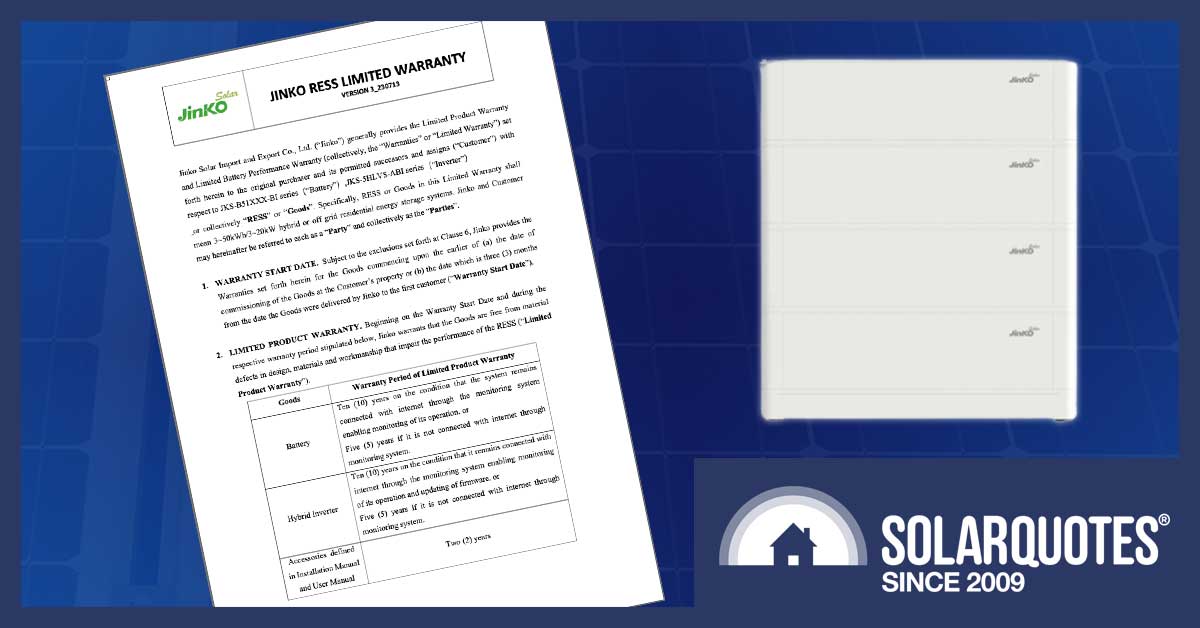
This article is all about the Jinko Suntank Battery’s technical specs. Two months ago, I wrote about its terrible warranty and decided no one in their right mind should buy it. But — to their credit — Jinko replaced the original warranty with a much better one shortly after my post was published.
In further good news, the new warranty applies retroactively to all Suntank batteries, not just those purchased after its introduction.
While the new warranty is not the best available, it is on par with many other battery warranties and good enough to make the Suntank battery an option to be considered rather than something to avoid.
The fact that Jinko Solar makes an effort to fix problems — and, in this case, apply the solution retroactively — is a major reason why we consider Jinko a trustworthy company and why Jinko solar panels are among the ones we recommend in our Solar 101 Guide.
In this deep dive into the details of the Suntank battery — I’ll tell you about its…
- Need for a compatible hybrid inverter
- Storage capacity
- Power output
- Backup capability
- Dimensions and weight
- Where it can be installed
- Operating temperature
- Low noise level
- Approximate price
I will also — briefly — describe its new and much-improved warranty.
Jinko Suntank Battery Videos
If you don’t have time to read stuff about the Suntank battery, you could watch this promotional video from Jinko that sounds like it was narrated by a European Speak & Spell:
Of course, they’ll only tell you good stuff about the battery, but that’s to be expected.
If you want to see what a neat installation in South Australia looks like, Jinko provides this video. Just be aware that this installer has gone out of his way to make the installation look schmick with some excellent 3D ducting work that is unlikely to be seen on most installs.
Hybrid Inverter Required
The Jinko Suntank battery will usually be paired with a Jinko Suntank hybrid inverter. Here are some details:
- Full Name: Suntank JKS-3~6HLVS-ABI
- Inverter Capacities: 3kW, 3.6kW, 4kW, 4.6kW, 5kW, and 6kW
- Single Phase Only
- Maximum Continuous Battery Discharge Power: 3 to 4kW depending on inverter capacity
- Maximum Solar Panel Capacity: 6 to 10.6kW depending on inverter capacity
- Average efficiency: 97% to 97.2%.
- Warranty: 10 years if connected to internet, 5 years otherwise.
- Link to Jinko Suntank Battery Datasheet
This is a single-phase inverter that can only supply backup power to a single phase.
It also looks very similar to a Growatt hybrid inverter. Just sayin’.
Vertical Integration
Jinko Solar has long been one of the world’s largest producers of solar panels, so it may seem strange that they recently started selling Jinko hybrid solar inverters and Jinko batteries.
Vertical integration is gaining traction in the home energy market. This means buying your solar hybrid inverter, battery, and solar panels from one provider, like Jinko. This approach eliminates compatibility issues and offers Jinko a commercial opportunity. However, while Jinko puts its name on these products, they’re not the manufacturer of the inverter or battery units — that look very similar to Growatt units…
The drawback with vertical integration is that companies sometimes make major mistakes when moving into an unfamiliar area, such as providing a battery with a crap warranty.
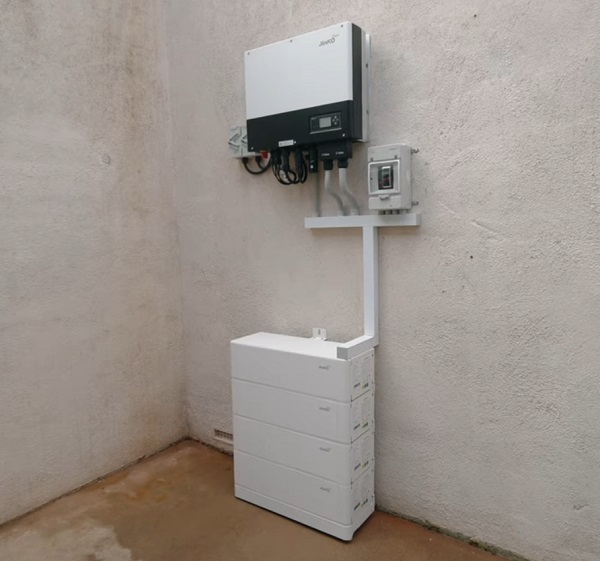
A Suntank battery and hybrid inverter installed at Encounter Bay in South Australia. (Image: Jinko Solar)
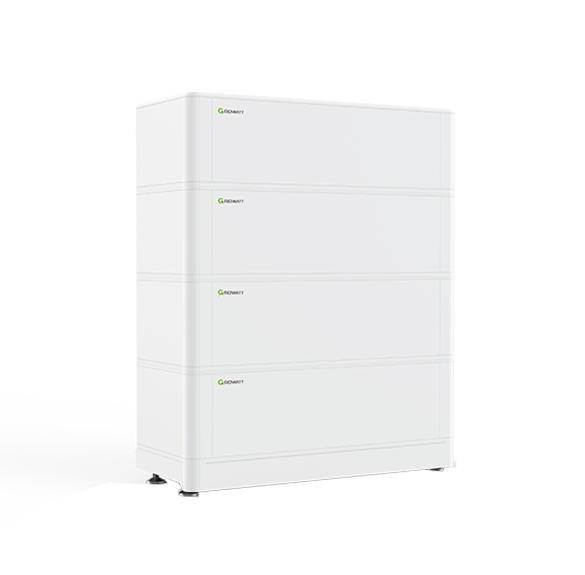
And just for fun, a Growatt battery.
Fill Your Roof With Solar
For the best bang for your buck, pair a Suntank battery with a new solar panel installation to share the inverter between your panels and your battery. Doing so allows you to maximise your solar panel capacity to the limits of the inverter, rather than being restricted to 133% of inverter capacity – as per the outdated stupid CEC rules.
The Suntank hybrid inverter approximately doubles your panel capacity, depending on its size:
So with a 5kW Suntank hybrid inverter, you can install up to 10.6kW of solar panels to help charge your battery and power your home, even if the weather is lousy.
Suntank Battery Tech Specs
Here are the Suntank datasheet and Suntank User manual, but I’ll cover the most important details below.
Battery Storage Capacity
The Suntank battery uses 2.3kWh modules (usable). Because it’s low-voltage, just one module can be used for 2.3kWh. But if you want more, you can stack up to 10 for a maximum 23kWh.

Useable energy storage when new is 2.3kWh per Suntank module. 1 to 10 can be used in a single stack.
Continuous Power
Two factors determine the Suntank’s continuous power output:
- The number of battery modules.
- The power output of the hybrid inverter.
Each battery module provides 1.28kW of power, up to a maximum of 5.1kW:
- 1 module = 1.28kW
- 2 modules = 2.56kW
- 3 modules = 3.84kW
- 4+ modules = 5.1kW
While you can theoretically get 5.1kW of continuous power with 4 or more modules, you’ll never get this with the Jinko Suntank inverter because its maximum continuous charging and discharging power maxes out at 4kW1
The maximum continuous AC battery power based on the Jinko Suntank hybrid inverter capacity is as follows:
- 3kW Suntank inverter = 3kW of continuous battery power. (With 3+ modules.)
- 3.6kW Suntank inverter = 3.68kW of continuous battery power. (With 3+ modules.)
- 4kW or larger Suntank inverter = 4kW of continuous battery power. (With 4+ modules.)
I recommend having enough battery modules to at least supply the maximum continuous power your inverter can provide.
Fast Switching Backup Power
A Suntank inverter and battery combination can supply backup power equal to the amount of continuous power the system can provide. The changeover to backup power is very fast at 10 milliseconds or less. This means you shouldn’t be able to notice the switch to backup power when the grid fails. The Suntank battery can also charge from the solar panels during a blackout, so it’s possible to have backup power through a long-term blackout.
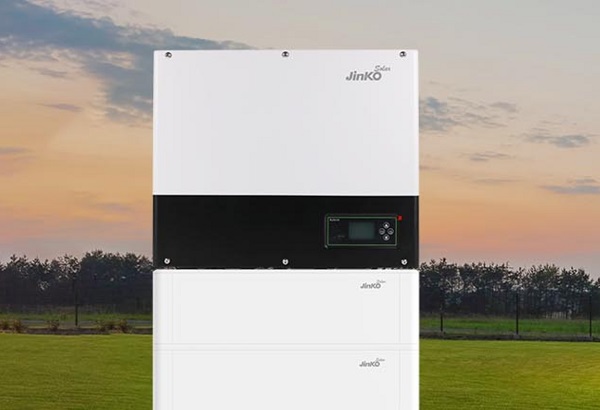
For some reason, Jinko likes to show pictures of the Suntank battery with their hybrid inverter sitting right on top of it. But that’s not a true representation of how it can be installed. It’s impossible. (Image: Jinko Solar)
Install A Battery Bypass Switch
Because the backup is in series, your backup circuits will lose power if the hybrid inverter fails. For this reason, you should always install a simple battery bypass switch. After all, these are called ‘essential circuits’ for a reason. I notice the Jinko install video overlooks the need for a bypass switch.
Size & Weight of the Jinko Suntank Battery
Each battery module measures:
- Width 65cm
- Depth 26cm
- Height 18.5cm
A stack of 10 will be around 1.84 metres tall2. If there are more than six modules, Jinko recommends making two stacks.
Each module weighs 28kg, so if you have 10 modules, it will weigh a tonne. Well, a tonne minus about 700kg, but that’s still pretty heavy.
Installation Location
The Suntank battery’s Ingress Protection rating is IP65. This means it can be installed outside and can resist rain. But the Suntank installation manual states it should be installed under shelter and out of direct rain. It also says it should be installed out of direct sunlight. This will help prevent it from getting hot, which can affect its performance and lifespan.
Because the Suntank is a low-voltage battery, it is connected to its hybrid inverter with thick, heavy cables, and the battery can’t be more than 1.5m away from the inverter.
Operating Temperature
The operating temperature of the Suntank battery ranges from -10°C to 50°C. In reality, it can discharge energy within that temperature range but only charge when the temperature is over 0°C. Not being able to charge when it’s below freezing is normal for lithium batteries. The maximum operating temperature of 50°C is better than many other batteries and useful because you don’t want it to conk out in the middle of a heatwave.
The Suntank hybrid inverter’s temperature range is -25° to 65°, so the battery’s operating temperature will be the limiting factor.
Operating Noise
The Suntank battery modules don’t have active cooling systems, so they should be mostly silent but may produce an electronic hum. No figure is given on its datasheet for noise. Hopefully, this is because it’s too quiet to worry about.
The Suntank hybrid inverter also doesn’t have a figure for noise, but as it doesn’t have a cooling fan it should also be fairly quiet.
Jinko Suntank Battery Cost
What you can expect to pay for a Suntank battery depends on the number of battery modules. Here are estimates for 3-5 modules:
- 3 modules with 6.9kWh of usable storage: $8,000
- 4 modules with 9.2kWh of usable storage: $10,000
- 5 modules with 11.5kWh of usable storage: $12,000
You’ll also need a hybrid inverter. How much that will cost will depend on its size, but you can expect it to set you back over $2,000. Installation is an additional expense. I recommend going for the best installer you can find, rather than the cheapest. Especially if you want a neat installation, backup that works when you need it and a bypass switch.
The Improved Warranty
The old Suntank warranty was so bad I couldn’t recommend the battery to anyone. Not even people I didn’t like3.
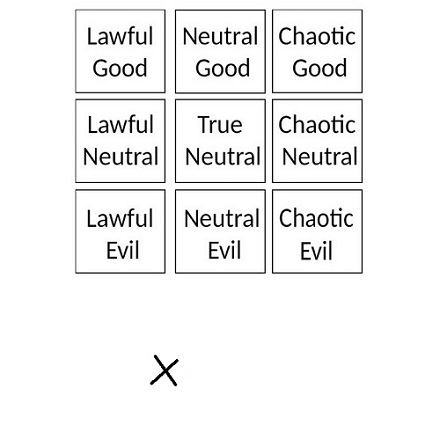
I marked with an “X” where I thought the old Suntank warranty should go on this chart.
But the new warranty is far superior — while still not being wonderful. But I’ve yet to find a battery warranty I’d call wonderful.
The main features of the Jinko Suntank Warranty are:
- Maximum duration of 10 years if connected to the internet, 5 years otherwise.
- The battery will retain a minimum of 60% of its original capacity.
- The warranty ends once it supplies 3,050kWh of stored energy per kWh of usable capacity.
- The smart meter and wireless module accessories have 2-year warranties.
If, on average, a Suntank battery has its full usable capacity discharged daily, its warranty will end after 8 years and 4 months. It’s not unusual for a battery to be used at around 80% capacity factor or less, so it should last 10 years for many households.
The Suntank hybrid inverter warranty, provided it’s connected to the internet, lasts 10 years. This means you won’t have to worry about its warranty ending before the battery’s.
A Welcome Addition
Now the Jinko Suntank battery has an acceptable warranty; it’s a welcome addition to the Australian home battery marketplace. I expect Jinko Australia to stand behind its new and improved warranty.
The maximum of 4kW of continuous power supplied with a Suntank hybrid inverter is less than the 5kW many other battery systems can supply. However, it’s still an acceptable discharge power for many households. The Suntank also has the advantage that just one or two modules can be used for a very small solar battery storage system if that’s all you require. However, if you’re like most people, you’ll want more storage, and you can get that by stacking the modules.
Footnotes
- Also, these figures have the minor drawback of being DC power rather than AC power, which your home uses. With the Suntank inverter’s average efficiency of around 97%, the AC power will be about 3% less. ↩
- Because they slot into each other a little, each additional module only adds 18.1cm in height, but most installations use a base that adds a few cm ↩
- Fortunately, I like everyone, so that never came up. ↩


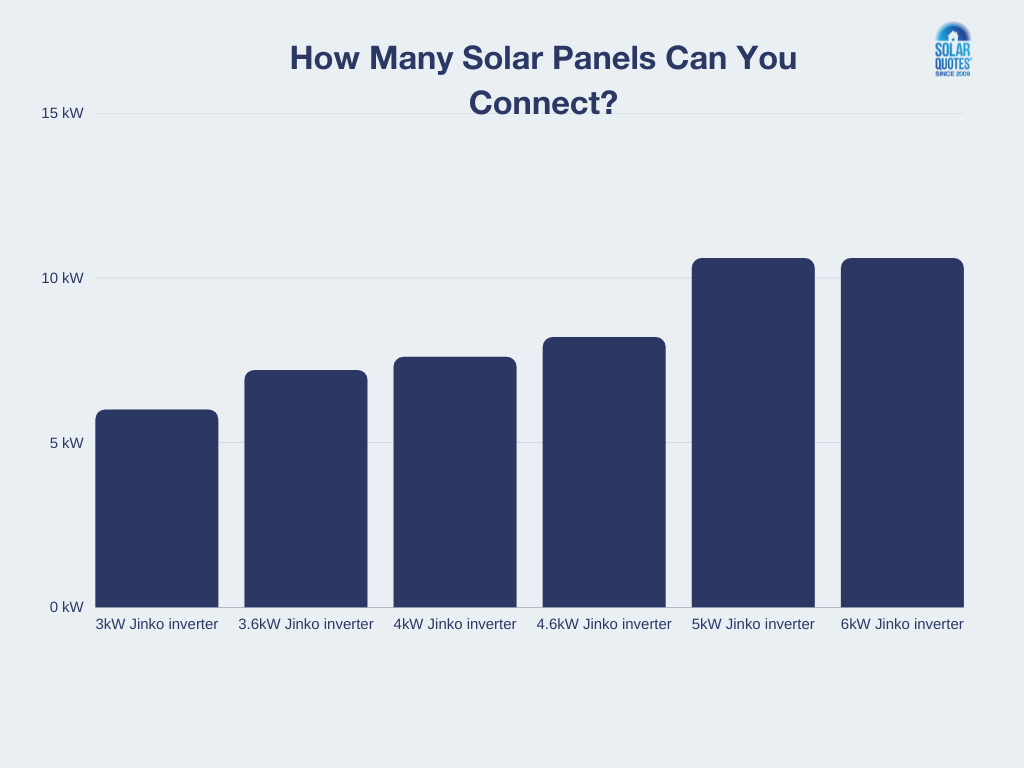
 RSS - Posts
RSS - Posts



Speak Your Mind